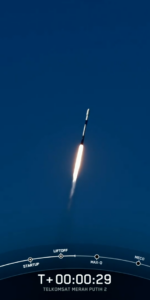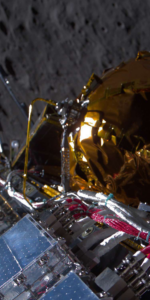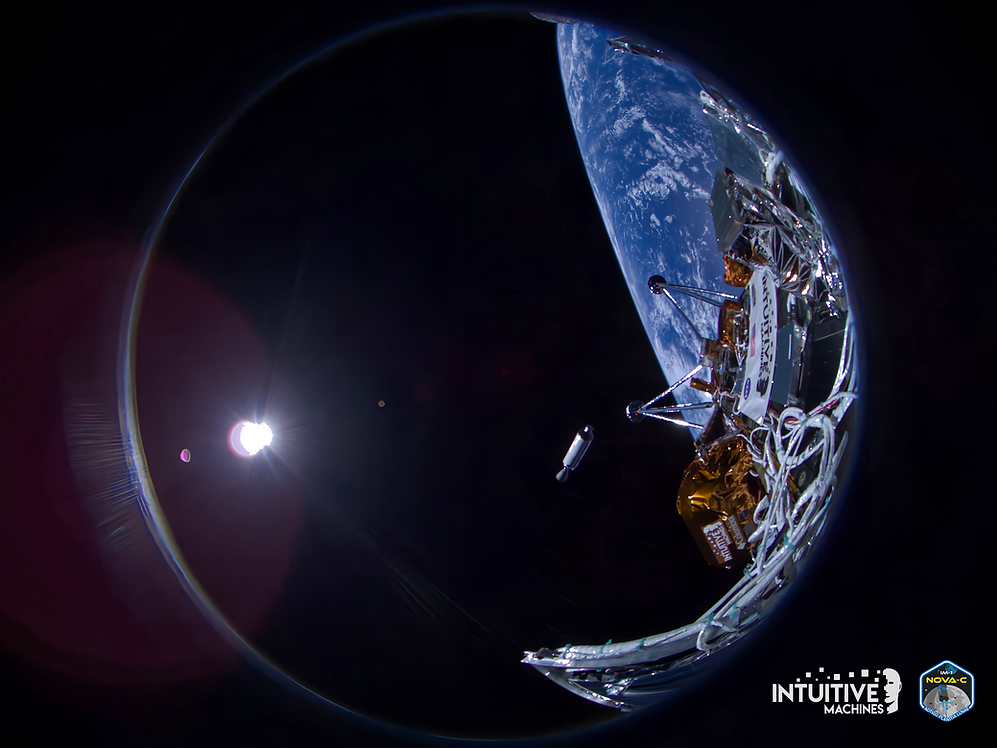
Less than one week since launching atop an 18-times-flown Falcon 9 booster from historic Pad 39A at Florida’s Kennedy Space Center (KSC), Intuitive Machines’ IM-1 mission is only hours away—hopefully—from soft-landing a U.S. spacecraft on the Moon for the first time in over five decades. After crossing more than 600,000 miles (1 million kilometers) of space, IM-1 entered orbit around our closest celestial neighbor earlier today and is aiming for a powered descent and touchdown at 5:49 p.m. EST Thursday near Malapert-A, a 15-mile-wide (24-kilometer) “satellite” crater of the three-times-bigger Malapert impact basin near the Moon’s South Pole at 80.4 degrees South lunar latitude.
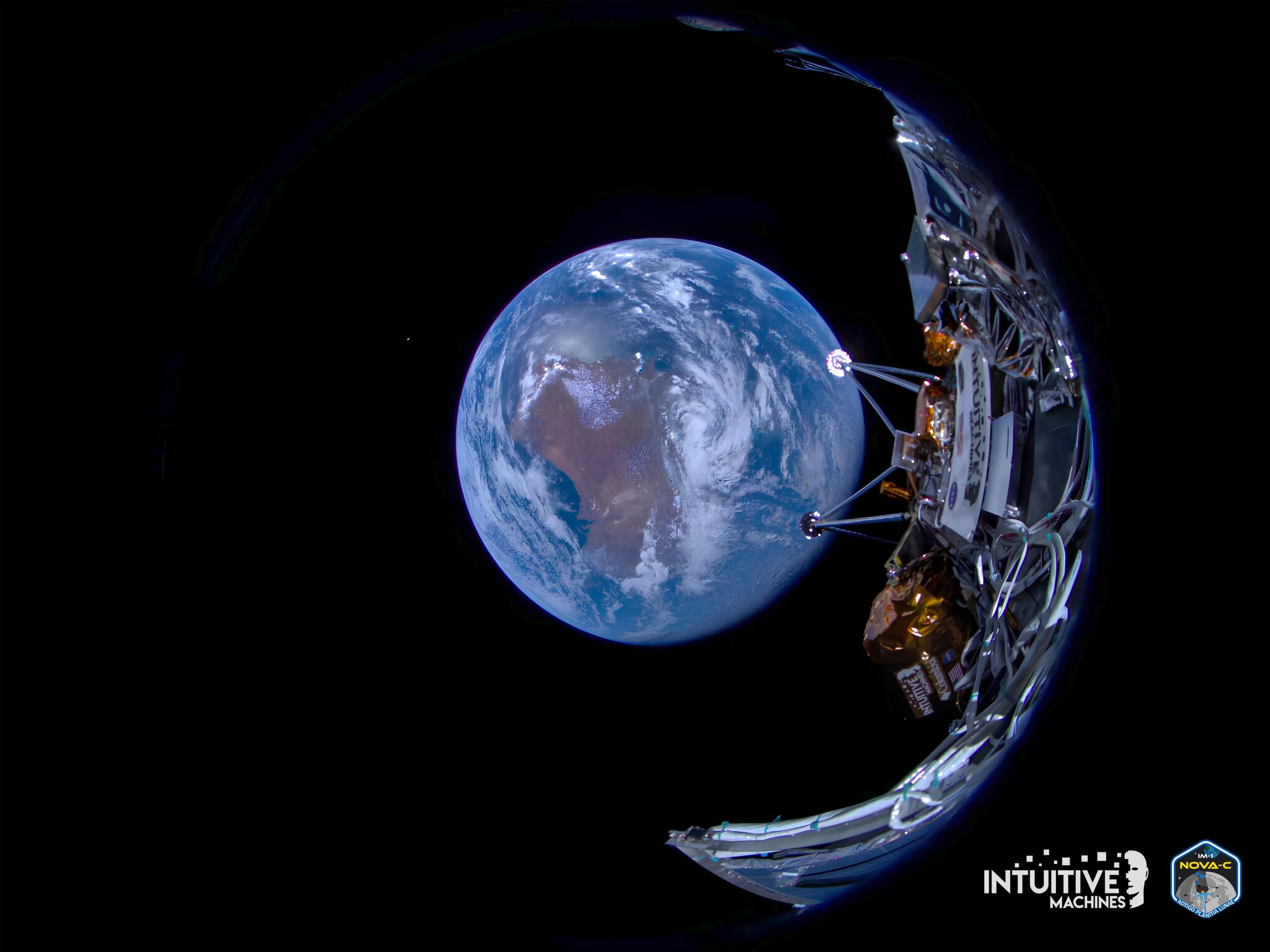
IM-1 is the first all-up test of Houston, Texas-based Intuitive Machines’ Nova-C lunar lander, nicknamed “Odysseus” for this maiden voyage in honor of the much-traveled Greek hero of the Trojan War. The spacecraft will deposit ten payloads for NASA, the International Lunar Observatory (ILO), the University of Colorado at Boulder, Embry-Riddle Aeronautical University, Louisiana State University and others for ten days of operations near the location intended for exploration and long-term habitation by future Artemis astronauts.
Following last month’s loss of Astrobotic’s Peregrine mission, which succumbed to a propellant leak shortly after its 8 January launch and was rendered unable to achieve a planned lunar landing, IM-1 looks set to become the first successful touchdown on the Moon under NASA’s Commercial Lunar Payload Services (CLPS) initiative to encourage the U.S. commercial space industry to develop, build and fly payload-laden landers. Core tasks for this and upcoming missions include sample return, lunar resource prospecting and demonstrating In-Situ Resource Utilization (ISRU) to help “reduce the risk when building landers for humans”.
NASA unveiled CLPS in May 2018 and Intuitive Machines was selected the following November as one of nine initial U.S. companies eligible to bid for missions. In May 2019, the space agency awarded Intuitive Machines contracts worth $77 million to deliver “as many as five payloads” emphasizing plume-surface interactions, space weather/lunar surface interactions, radio astronomy, precision landing techniques and a communications and navigation node for future autonomous technologies to Oceanus Procellarum (the “Ocean of Storms”), at 25 degrees North latitude, near the Moon’s equator, by July 2021.
More recently, in May of last year IM-1’s landing site was shifted to Malapert A, which resides in the southern lunar highlands at 80.4 degrees South latitude, about 190 miles (300 kilometers) from the South Pole. This location has long been proposed both as a site for a transmitter for human expeditions and its position within the radio “shadow” of transmissions from Earth blocks radio noise from the home planet and renders it ideal for the emplacement of future radio telescopes.
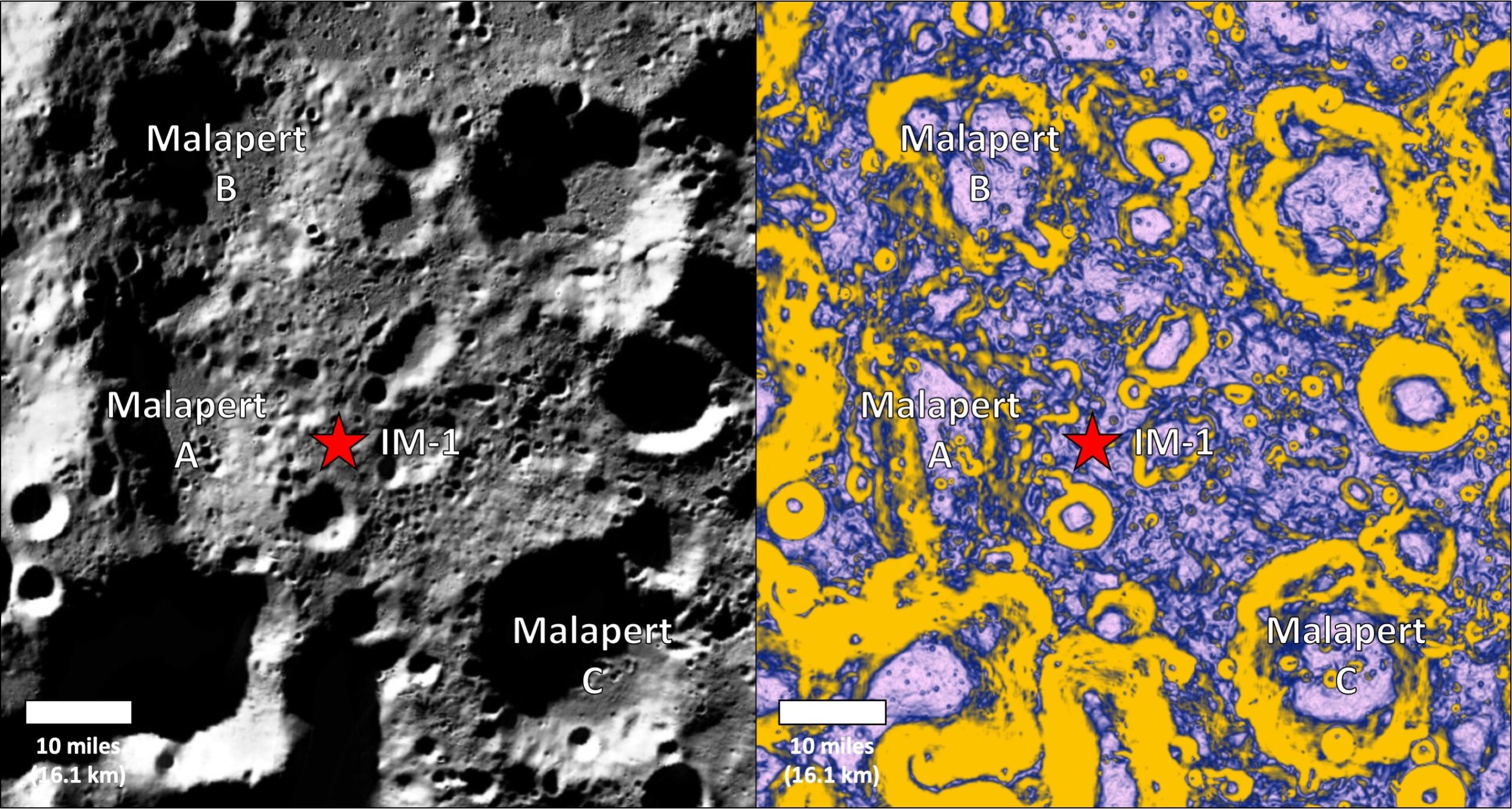
“The decision to move from the original landing site of Oceanus Procellarum was based on a need to learn more about terrain and communications near the Lunar South Pole, which is expected to be one of the best locations for a sustained human presence on the Moon,” NASA noted after last year’s change of landing site. “Landing near Malapert A also will help mission planners understand how to communicate and send data back to Earth from a location that is low on the lunar horizon.”
After a one-day delay induced by “off-nominal methane temperatures” during efforts to load propellants aboard Odysseus, the IM-1 mission got underway at 1:05 a.m. EST Thursday, 15 February, the Falcon 9 boosting it off the planet and via a pair of second-stage engine “burns”—a customary six-minute firing, then a 34-minute phase of coasting, ahead of a final firing, lasting only 53 seconds—deploying the spacecraft into the inky blackness some 48 minutes and 24 seconds after liftoff.
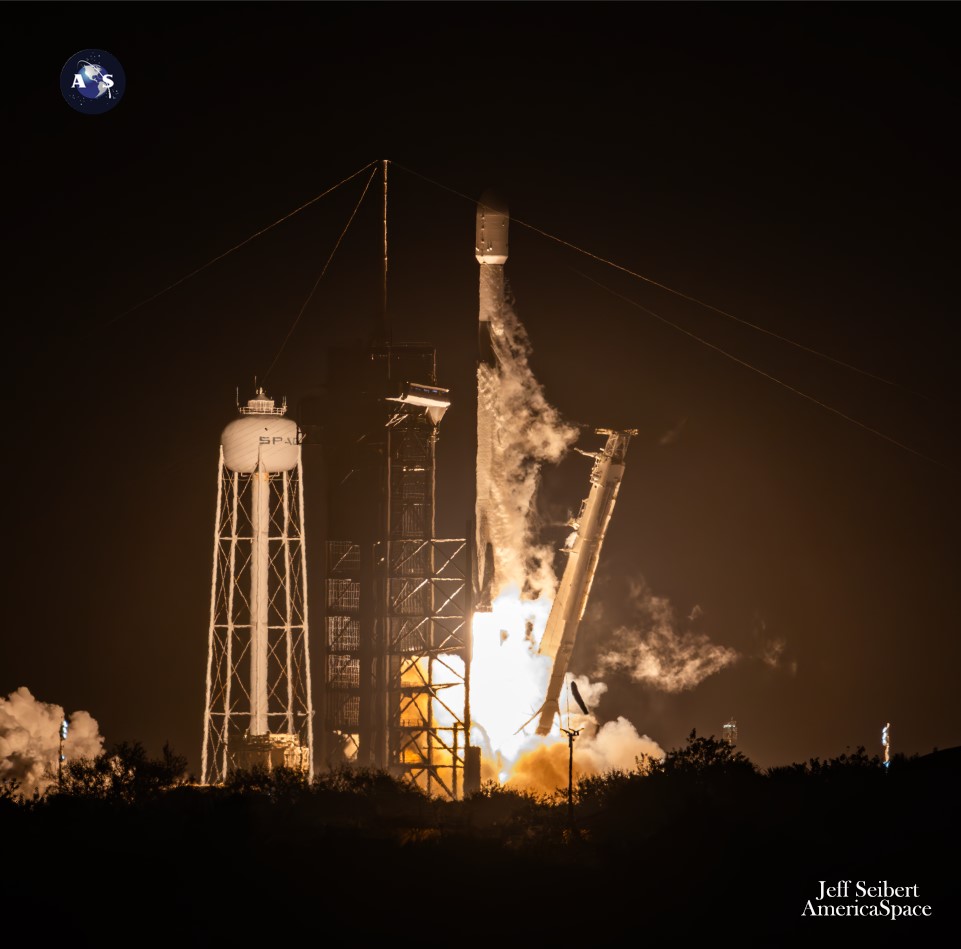
“Deployment of @Int_Machines IM-1 confirmed,” tweeted SpaceX as the six-legged Odysseus lander drifted serenely away into the inky blackness to begin her week-long voyage to the Moon.
In those opening hours, the spacecraft autonomously powered-up its sensors and radios without incident, although at one point its navigation system rejected star tracker data, a glitch quickly corrected with an uplinked software patch. “Initially, the star tracker information was numerically conditioned slightly differently than we anticipated,” Intuitive Machines explained in a 15 February update.
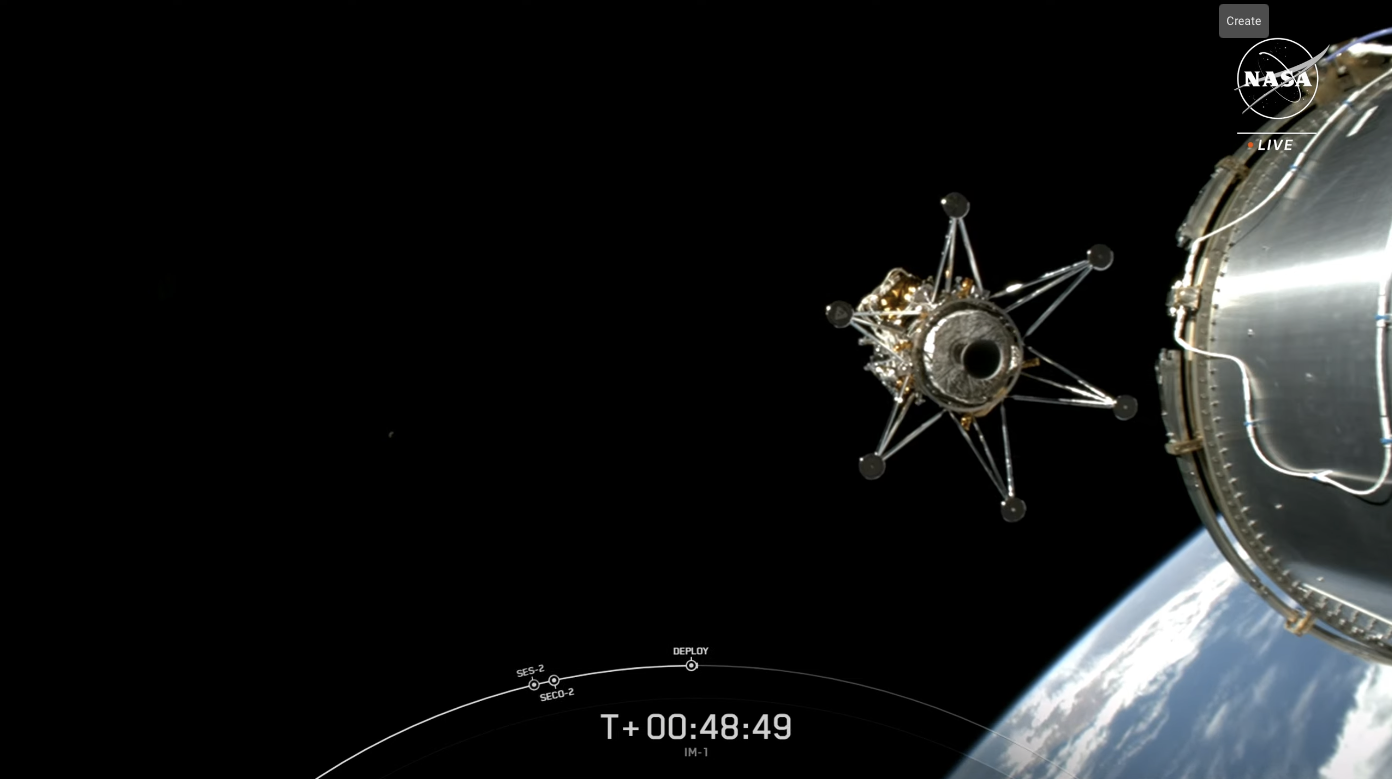
“We were expecting a one-in-a-thousand numerical tolerance and received a number more like two and three in a thousand,” it was added, prompting Odysseus’ navigation system to reject the data. “When we tested this system terrestrially, they were within tolerance, but we experienced slightly different numerical conditioning in flight.”
During the almost-week-long transit across the gulf of cislunar space which separates Earth and the Moon, Intuitive Machines allocated a Commission Maneuver (CM) and three Trajectory Correction Maneuvers (TCMs) by Odysseus’ VR-900 engine, the first engine fueled by liquid oxygen and liquid methane ever used in space. Citing a complicated “learning process” as teams nursed their spacecraft through its first days in space, the CM was postponed from 15 February.
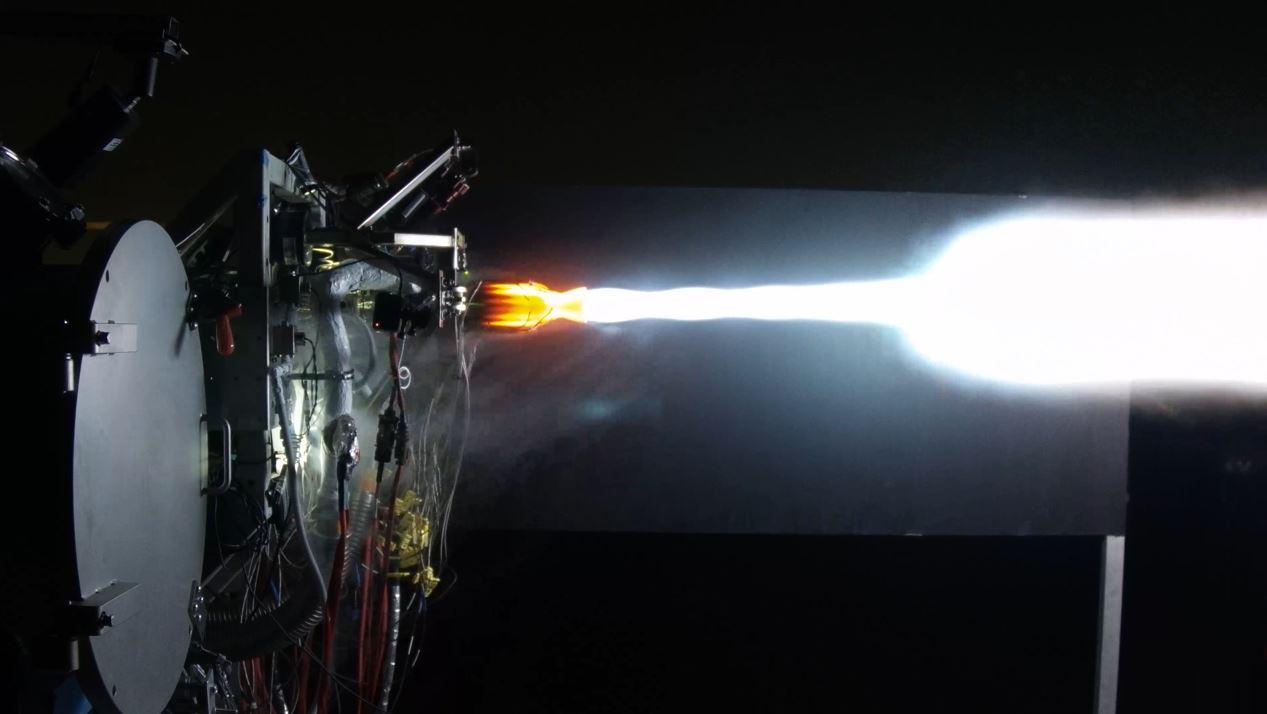
“Communication delays and outages are expected when executing lunar missions, which we accounted for in our mission planning,” Intuitive Machines explained. Intermittent uplink and downlink communications from Odysseus carried the potential to negatively impact “our ability to collect the critical information required to support the CM burn and follow-on performance analysis”.
One observed oddity was that the VR-900 liquid oxygen feed line took longer to chill down in space than it had done in tests on the ground. “After understanding the in-space liquid oxygen feed line requirements,” Intuitive Machines noted, “we adjusted and uploaded the CM burn preparation timeline and increased the on-board event sequence timer.”
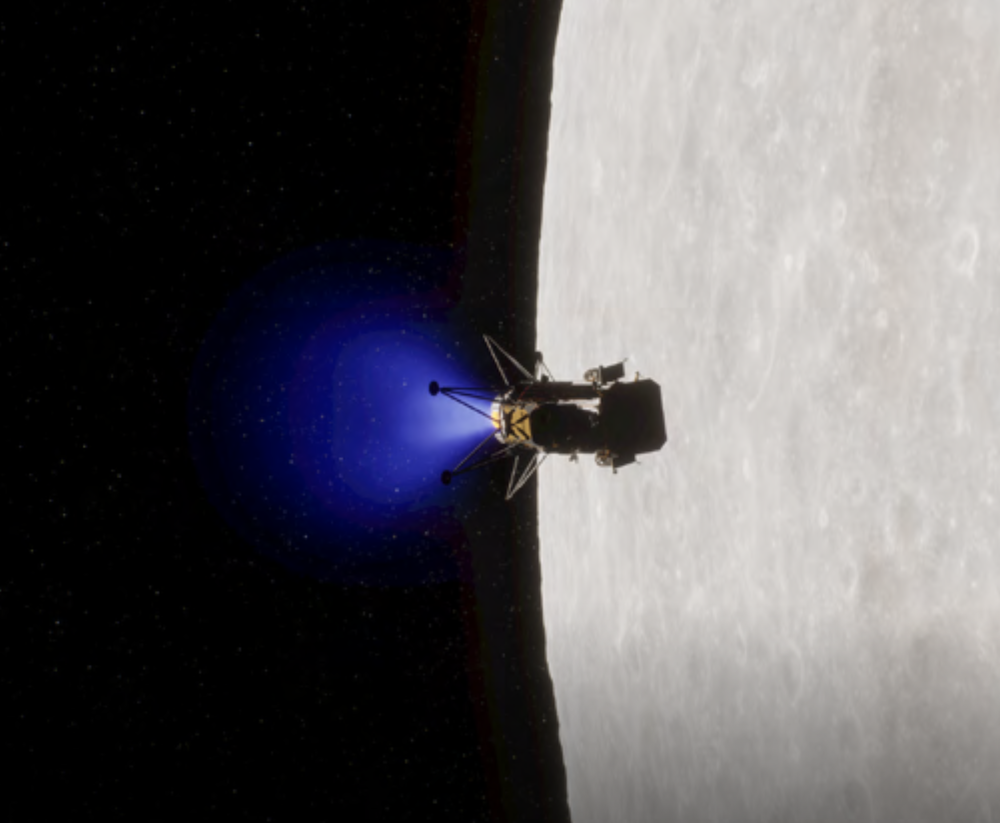
The 21-second-duration CM burn was completed without incident on 16 February at a distance of more than 167,000 miles (270,000 kilometers) from Earth. “This engine firing included a full-thrust main-stage engine burn and throttle-down profile necessary to land on the Moon,” tweeted Intuitive Machines in its summary.
Subsequent data analysis revealed that the CM burn allowed Odysseus to hit its 68.8-feet-per-second (21 meters per second) targeted velocity with an accuracy of 2.6 feet per second (0.8 metres per second). “Propulsion mixture ratios, mass flow rate and temperature were as predicted,” it was added, and the overall performance of the CM burn was characterized as “nominal and per expectations”.
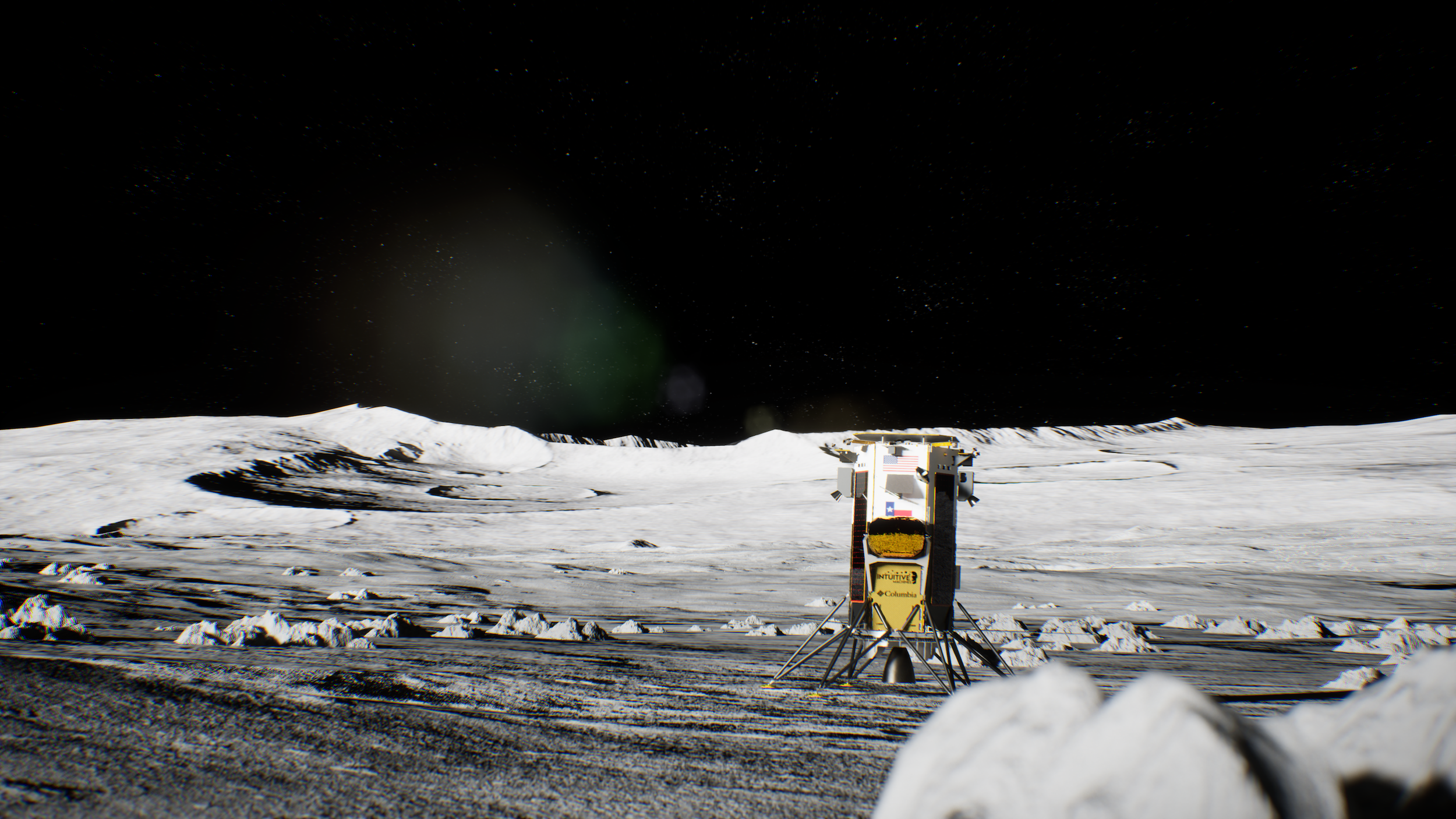
The first pair of TCMs were conducted on 18 and 20 February, with the second of these burns considered of sufficient precision to eliminate the need for a TCM-3. Finally, earlier today Odysseus fired its VR-900 engine for 408 seconds to enter a circular lunar orbit at a mean altitude of 57 miles (92 kilometers). The 2,600-feet-per-second (800-meters-per-second) change in velocity needed for Lunar Orbit Insertion (LOI) was completed with an accuracy of less than 6.6 feet per second (2 meters per second).
Tomorrow’s scheduled landing at Malapert A, if successful, will see IM-1 and Odysseus achieve the first soft-landing of a U.S. spacecraft on the surface of the Moon since the Apollo 17 Lunar Module (LM), “Challenger”, made landfall in the Taurus-Littrow Valley in December 1972. It is also noteworthy that both Apollo 17 and IM-1 originated from the selfsame Florida launch complex, historic Pad 39A.
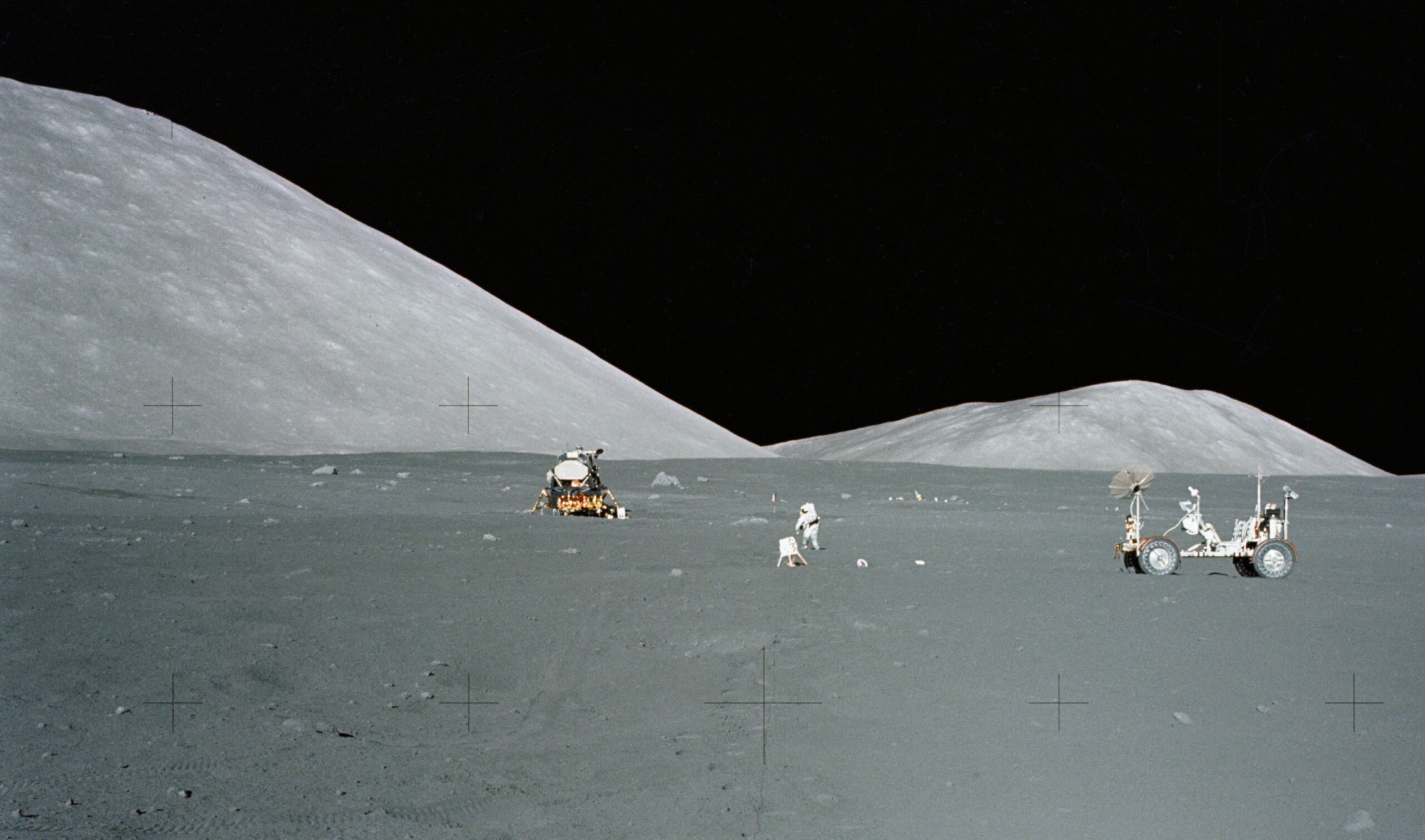
IM-1’s suite of payloads includes six instruments from NASA: an array of laser retroreflectors and a sophisticated navigational lidar for precise ranging, a lighthouse-like navigation demonstrator, an investigation into how well future Moon-based radio observatories might function on the Moon, an experiment to explore the response of lunar regolith to rocket exhaust and an innovative propellant mass gauge.
Also aboard is Embry-Riddle University’s EagleCam CubeSat, which will be ejected shortly before IM-1 touches down, hopefully to acquire the first third-person views of a lunar landing. Louisiana State University has supplied its Tiger Eye-1 radiation monitoring instrument and the ILO-X experiment will evaluate precursor technology for a future planned astrophysics observatory for emplacement near the Moon’s South Pole.
Rounding out the IM-1 payload suit is Moon Phases, a set of sculptures created by award-winning artist Jeff Koons. It stands to become the first artwork of its kind to reach the lunar surface since Apollo 15 Commander Dave Scott left the “Fallen Astronauts” memorial in the dust of Hadley-Apennine in August 1971.




